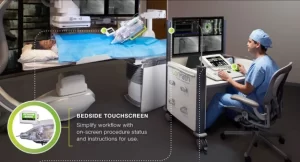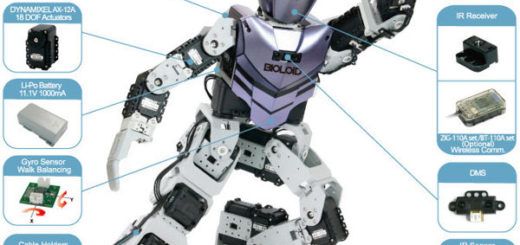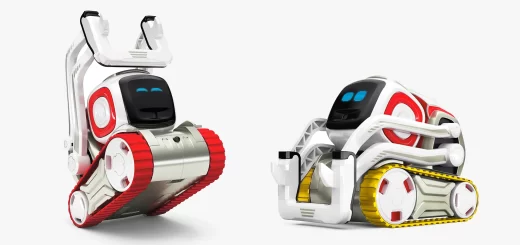Interventional radiology types, Robotic endovascular systems advantages and disadvantages
Robotic systems can enhance image-guided percutaneous procedures, demonstrating the potential to facilitate needle placements and guidance and diminish radiation exposure risk. Smart soft-body robots that fit the smallest vessels with high-precision wireless control and autonomous capabilities have the potential to set future standards for minimally invasive endovascular therapies.
Interventional radiology (IR)
It is a medical subspecialty that performs minimally invasive procedures using medical imaging guidance, such as X-ray fluoroscopy, computed tomography, magnetic resonance imaging, or ultrasound. Interventional radiology performs both diagnostic and therapeutic procedures through very small incisions or body orifices.
Benefits of interventional radiology
Interventional radiology techniques can reach the deep structures of the body through a body orifice or tiny incision using small needles and wires. Interventional radiology decreases risks, pain, and recovery compared to open procedures, Real-time visualization enables precision guidance to the abnormality, making the procedure or diagnosis more accurate, These benefits are weighed against the additional risks of lack of immediate access to internal structures (should bleeding or a perforation occur), and the risks of radiation exposure such as cataracts and cancer.
Interventional radiology allows access to the internal structures of the body through body orifices or very small incisions and guidance with medical imaging, the procedure will use common elements such as a puncture needle (to pass through the skin), guidewires (to guide through structures such as blood vessels or the biliary or urinary systems), a sheath (which slides over the guidewire and hold the path open without injuring it), and catheters (that allow fluids to be pushed through them).
Medical imaging machines can be used to allow the healthcare provider to see what is occurring within the body, Some use X-rays (such as CT and fluoroscopy) and some do not (such as ultrasound and MRI), In each case, the images created may be modified by a computer to better visualize the structures as is in the case with digital subtraction angiography, CT and MRI, or the display of the images improved with virtual reality or augmented reality presentation.
Robotic CT and MRI-guided procedures
Computed tomography (CT) and MRI have been the first areas for robotic guided interventions as they both offer three-dimensional imaging of any area of the body in fairly high resolutions, The robotic instruments are magnetic enabled, making magnetic resonance imaging (MRI) guided interventions faster and more accurate, This is exciting as MRI-guided intervention can offer instant feedback on treatments with real-time functional parameters.
Robots in Interventional radiology
Robotic endovascular systems can be used to treat endovascular aneurysms, uterine artery embolizations, and cardiac electrophysiology ablations, Robotic systems can achieve a more accurate manipulation and increased steerability of the catheter during endovascular procedures, robotic systems can enhance image-guided percutaneous procedures, demonstrating a potential to facilitate needle placements and guidance and diminish radiation exposure risk.
Robotic-assisted surgical procedures are performed in several disciplines, including general, cardiothoracic, and urologic surgery, It can improve patient safety and the quality of patient care, Robotic assistance can be combined with ultrasound, magnetic resonance imaging (MRI), computed tomography (CT), and fluoroscopy.
The benefits of robotic assistance in interventional procedures with these modalities are clear: greater operator precision and control, This improved accuracy can lead to reduced procedural time, radiation exposure, recovery time, procedural complications and mortality, An additional benefit is remote operator use, Tele-operation can reduce radiation exposure to the operator and also afford remote patient access, The latter could be of value when operator assistance is needed.
Robotic assistance in interventional radiology has naturally extended to interventional radiology for percutaneous and endovascular interventions. Endovascular robotic-assisted procedures are performed with a disposable catheter inserted percutaneously and navigated and manipulated remotely.
Magellan robotic catheter system has been evaluated for endovascular aortic repair and various transarterial embolizations, Its use may be combined with image fusion guidance as pre-intervention 3D-computed tomography angiography overlaid onto live 2D fluoroscopy, Remote catheter control can reduce the radiation exposure of the medical team.
The AcuBot robot offers a 2-mm precision, It is feasible, safe, and fast for biopsy or percutaneous ablation of various organs, It is performed with a remote (computer or joystick), so the operator and his team are not to be exposed to X-rays.
The radiologist can be remote to the suite where the procedure is being carried out and does not receive any radiation exposure, the robotic instruments are designed with several degrees of freedom in navigation making their dexterity better than the average human being, so. in patients with complex anatomy, navigation of the interventional devices would be easier and safer.
Robotic interventional radiology will become a subspecialty in itself and this will lead to the development of new procedures that are currently not available, Robotics IR presents higher precision and control, It reduces procedural radiation exposure time, and It reduces complications and mortality, there is potential for teleoperation which could offer remote patient access.
The use of robotic catheter steering systems are used in catheter placement in cardiac ablations and was further adapted to percutaneous coronary intervention (PCI), robotic catheter steering systems offer accurate lesion calculations, precise stent placement, and reduced radiation exposure and contrast delivery, This system has been adapted to peripheral vasculature. Endovascular robots steer the tips of catheters precisely using magnetic fields.
Robot ultrasound-guided procedures
Robots can maneuver needles into a predetermined trajectory with the use of tissue motion analyzers, Transrectal ultrasound (TRUS) is used in combination with the Da Vinci robot for prostatectomy, The Transrectal allows the visualization of the instrument tips, dissection planes, bladder neck, and neurovascular bundle to reduce the complications.
Ultrasound is used as an adjunct to surgical robots rather than as part of interventional radiology, An alternative use of robotics in ultrasound is to allow telerobotic systems to deliver diagnostic ultrasound to areas where there is no locally available radiologist or sonographer, practitioner can remotely control the position of the probe on a patient to produce sonographic images that are immediately visible to the practitioner controlling the robot anywhere in the world.
Disadvantages of Robotic endovascular systems
Robotics in interventional radiology comes with higher procedural costs, longer pre-procedural preparation, and the need for additional staff, an argument is made that the absence of operator intraprocedural tactile feedback could lead to visceral and vascular injuries. surgical robotics needs a stable power supply combined with being wireless, Research is being carried out to assess how wireless power supplies can be maintained via the use of the MR scanner.
In vascular navigation, robotics has still a limited choice of catheter shapes, too large catheters, and their relative stiffness when compared with standard catheters used today, the cost of the robot and of the catheters, as well as installation time still remain important issues. Vascular anatomies may be narrowed or occluded from atherosclerosis or thrombosis, catheter-directed treatment of small vessel disease is dangerous and limited to the delivery of drugs and microparticles.
Endovascular approaches may require repeated interventions, rebleeding rates or failure following coil embolization of aneurysms can be as high as 47% requiring additional procedures; thrombectomy procedures may need to be staged and include combinatorial approaches that may span several days, Patients that receive vascular stents may become restenosed or occluded, requiring additional procedures that may include angioplasty, additional stents or thrombolysis.
The design of the endovascular microrobot should be adaptable to the specific requirement of the clinical condition, including entry into the body, real-time tracking capability, antifouling, the safety of operation at the targeted site, and device retrieval when required after the procedure.
Any failure inside the circulatory system could rapidly escalate and result in morbidity and mortality from nontarget embolization, perforation, vessel wall injuries such as dissection and thrombosis, This is a major potential bottleneck of any remotely controlled devices designed to operate within the vascular system, It is critical to realize that the failure tolerance for devices inside the vasculature is extremely low to nil.
Many minimally invasive clinical applications have benefited from steerable catheters, including ablation procedures for the treatment of cardiac arrhythmia and the targeting of the peripheral vasculature, tethered device-related complications such as perioperative bleeding, and thrombosis, perforation, rupture, dissection, restenosis, and endovascular leaks. the robotic system has been utilized for cardiac electrophysiological applications and endovascular aneurysm repair.
Robotic interventional radiology comes with higher procedural costs, longer pre-procedural preparation, and the need for additional staff, the absence of operator intraprocedural tactile feedback can lead to visceral and vascular injuries.
CT-guided interventions come with radiation exposure, constrained tunnel dimensions, multiple steps to position the needle, and planning occurring outside the scan room, so, procedures can take long periods, MR-guided interventions are less established due to the cost, tunnels sizes, and constraints on instruments that can be used.
You can download Science online application on Google Play from this link: Science online Apps on Google Play
Robotic Surgery vs. Laparoscopic Surgery, Robot-assisted surgery features, benefits and drawbacks
Surgical robot types, advantages, disadvantages, How is robotic surgery different from traditional
Healthcare robotics, Nursing care robots review, types, advantages, disadvantages ans uses
Artificial intelligence in medical field advantages & how AI medical diagnosis changes medicine
Robotic surgery cons, pros, uses and How does robotic surgery work?
Applications of Artificial intelligence in the medical field and Healthcare
Enlarged prostate symptoms, Prostatic artery embolization (PAE) importance and risks




